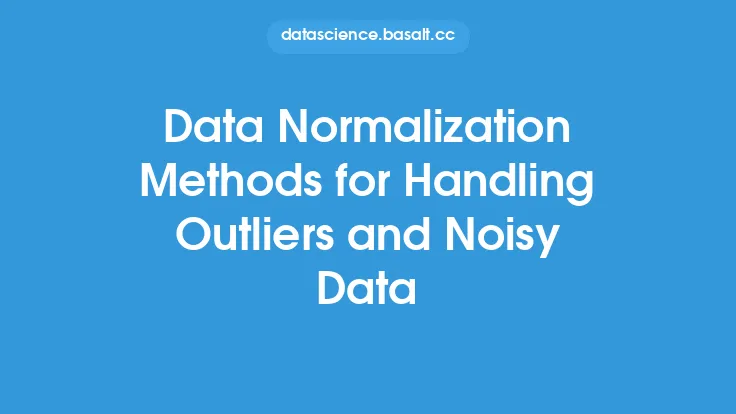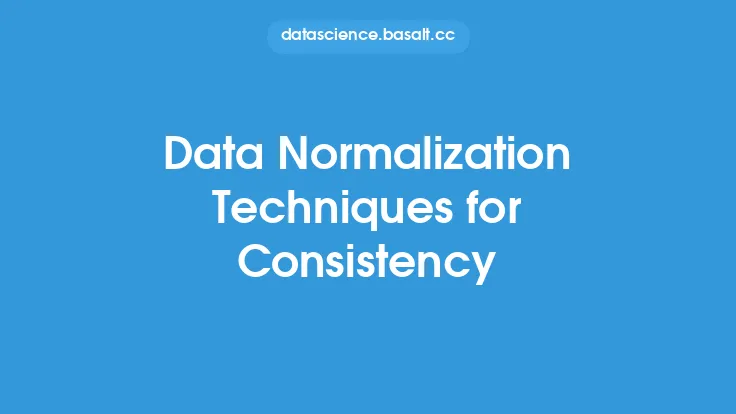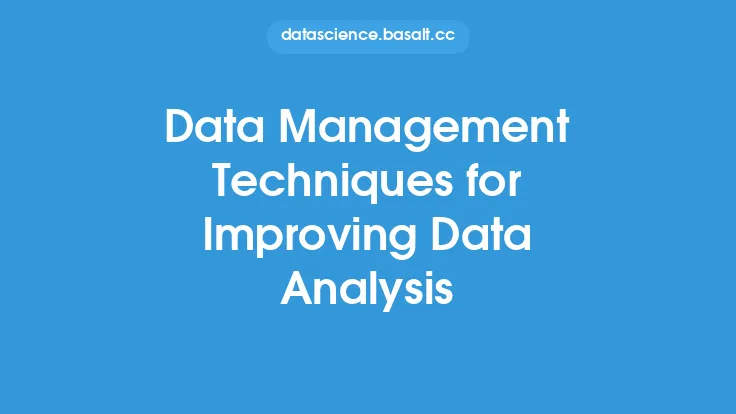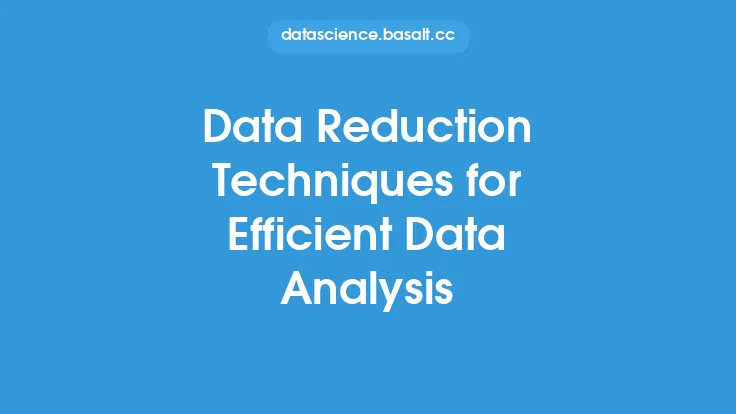Data normalization is a crucial step in the data preprocessing phase of data mining, as it enables effective analysis by transforming raw data into a suitable format. Normalization techniques are used to rescale numeric data to a common range, usually between 0 and 1, to prevent features with large ranges from dominating the analysis. This process helps to improve the accuracy and reliability of data mining models by reducing the impact of scale differences between variables.
Introduction to Data Normalization
Data normalization is a technique used to transform numeric data into a common scale, usually between 0 and 1, to prevent features with large ranges from dominating the analysis. This process is essential in data mining, as it enables the comparison of different features and improves the accuracy of data mining models. Normalization techniques are used to rescale numeric data, reducing the impact of scale differences between variables. There are several data normalization methods, each with its strengths and weaknesses, and the choice of method depends on the specific problem and data characteristics.
Types of Data Normalization Methods
There are several data normalization methods, including min-max normalization, z-score normalization, logarithmic normalization, and decimal scaling. Min-max normalization, also known as feature scaling, is a widely used technique that rescales numeric data to a common range, usually between 0 and 1. This method is simple to implement and effective in reducing the impact of scale differences between variables. Z-score normalization, also known as standardization, is another popular technique that rescales numeric data to have a mean of 0 and a standard deviation of 1. This method is useful in reducing the impact of outliers and improving the accuracy of data mining models.
Min-Max Normalization
Min-max normalization is a widely used technique that rescales numeric data to a common range, usually between 0 and 1. This method is simple to implement and effective in reducing the impact of scale differences between variables. The formula for min-max normalization is: (x - min) / (max - min), where x is the original value, min is the minimum value, and max is the maximum value. This method is useful in improving the accuracy of data mining models, as it reduces the impact of features with large ranges. However, min-max normalization can be sensitive to outliers, as they can affect the minimum and maximum values used in the normalization process.
Z-Score Normalization
Z-score normalization, also known as standardization, is another popular technique that rescales numeric data to have a mean of 0 and a standard deviation of 1. This method is useful in reducing the impact of outliers and improving the accuracy of data mining models. The formula for z-score normalization is: (x - mean) / standard deviation, where x is the original value, mean is the mean value, and standard deviation is the standard deviation of the data. This method is useful in improving the accuracy of data mining models, as it reduces the impact of features with large ranges and outliers.
Logarithmic Normalization
Logarithmic normalization is a technique that rescales numeric data using the logarithmic function. This method is useful in reducing the impact of extreme values and improving the accuracy of data mining models. The formula for logarithmic normalization is: log(x), where x is the original value. This method is useful in improving the accuracy of data mining models, as it reduces the impact of extreme values and outliers. However, logarithmic normalization can be sensitive to zero values, as the logarithmic function is undefined for zero.
Decimal Scaling
Decimal scaling is a technique that rescales numeric data by multiplying the values by a power of 10. This method is useful in reducing the impact of scale differences between variables and improving the accuracy of data mining models. The formula for decimal scaling is: x / 10^k, where x is the original value and k is a constant. This method is useful in improving the accuracy of data mining models, as it reduces the impact of features with large ranges.
Choosing the Right Normalization Method
The choice of normalization method depends on the specific problem and data characteristics. Min-max normalization is a widely used technique that is simple to implement and effective in reducing the impact of scale differences between variables. Z-score normalization is another popular technique that is useful in reducing the impact of outliers and improving the accuracy of data mining models. Logarithmic normalization is useful in reducing the impact of extreme values and improving the accuracy of data mining models. Decimal scaling is useful in reducing the impact of scale differences between variables and improving the accuracy of data mining models.
Conclusion
Data normalization is a crucial step in the data preprocessing phase of data mining, as it enables effective analysis by transforming raw data into a suitable format. Normalization techniques are used to rescale numeric data to a common range, usually between 0 and 1, to prevent features with large ranges from dominating the analysis. The choice of normalization method depends on the specific problem and data characteristics, and there are several methods to choose from, including min-max normalization, z-score normalization, logarithmic normalization, and decimal scaling. By applying the right normalization method, data mining models can be improved, and the accuracy of analysis can be increased.





